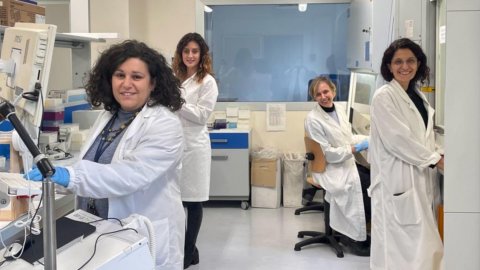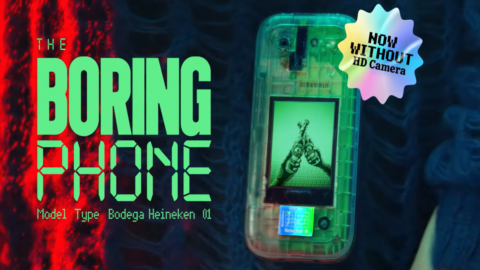The disease of Alzheimer It is the most common neurodegenerative pathology among those of the nervous system. It causes problems with memory, thinking, and behavior, usually in people 65 and older. The speed with which the disease progresses is different for each individual, but it is – in any case – unstoppable.
However, the most recent scientific works have brought evidence of a significant improvement in memory in patients subjected to repeated transcranial magnetic stimulation (rTMS). In particular, the research group of the Santa Lucia Foundation (directed by Prof. James Koch), with a phase 2 clinical study (there are 4, in total, the phases of the clinical trial) demonstrated that it is possible to obtain a sensitive slowing of disease progression and counteract the cognitive and functional decline that characterizes this progressive disease, targeting rTMS on the precuneus, a region of the brain located in the back of the head, particularly involved in Alzheimer's disease from its early stages. For this reason, a protocol for the treatment of patients based on the experimental results obtained has been developed.
The purpose of the project "DTA” (Dosimetry of a new RTMS treatment in 3D cultures of Alzheimer's disease for the identification of therapeutic efficacy markers) is to proceed by reversing the usual progress order of the studies, thus passing from the “in vivo” studies to the “in vitro". An operation of reverse engineering which gives back to researchers the possibility of having a systematic and – indeed – non-qualitative approach. Specifically, DTA wants it first characterize, from a point of view dosimetric, the stimulus applied to patients, and then reproduced on a cellular model of Alzheimer's. This is a fundamental starting point since the calculation and measurement of the doses absorbed by matter when subjected to electromagnetic radiation (dosimetry) allows to calibrate future experiments and/or establish times and quantities for final therapies. Furthermore, DTA provides for the identification of molecular targets sensitive to rTMS, namely i microRNA, small endogenous RNA molecules which play the role of "master" regulators of biological functions, which are found in all biological fluids and which can be evaluated in quantitative terms. Once identified, the latter will be analyzed in "in vitro" models of the disease and in the serum of Alzheimer's patients before and after exposure to rTMS.
Coordinating the DTA research group made up of engineers, biologists, psychologists and doctors is the biomedical engineer Catherine Merla of the Biomedical Technologies laboratory of theENEA, which involved in the work three young researchers winners of research grants and scholarships advertised with DTA funds, some experts in biomedical engineering and molecular biology and also a master's thesis internship student in biomedical engineering of the “Sapienza” University of Rome.
The project, funded by the Lazio Region through the "Research Group Projects 2020" program, with funds allocated by the European Union (POR FESR Lazio-2014-2020), has reached halfway through its development and can already say that it has achieved several goals that bode well for the continuation of the research. Besides having been characterized the field magnetic used in the clinical protocol, gods were created dosimetric models for the evaluation of in vitro and in vivo fields and it is the stimulation is translated from the patient's head to the cellular model. So a in vitro model of Alzheimer's disease with cells exposed to rTMS treatments. Finally, a large number of patients were enrolled, following a specific screening and analysis protocol, to whom blood samples taken before and after treatment.
In the coming months, the molecular characterization of biological samples (patients and cells) in terms of microRNA will be completed following exposure to rTMS - which until now was not never been made – and the results that will be obtained will be very important for understanding the effects of this biophysical therapy on the symptoms of the pathology. The possibility of predict efficacy of rTMS treatment, thanks to the molecular markers, affects the choice of therapies and can only attract the interest of companies biomedical companies who can therefore evaluate the opportunity of investing in the various derived clinical applications.
La pandemic and the customs inconvenience connected to Brexit unfortunately contributed to the inevitable slowdown of the project with the effect of having to access an extension (end of activities scheduled for April 2023 and postponed to December 2023) as well as a replacement of the initially hypothesized cellular model . However, these unforeseen events did not stop the effective progress of DTA nor discourage the enthusiasm of the entire research group.
At the end of this first period (January 2023) a meeting is scheduled between the researchers of ENEA and those of the Santa Lucia Foundation to plan the final activities and discuss the valorisation in terms of publication of the results achieved so far from a dosimetric and biological point of view . These results will in any case be the subject of a communication to the BioEM 2023 international conference which will take place next June in Oxford. This conference is one of the most important for the applications of electromagnetic fields in medicine and biology and will allow for the dissemination of the results of the first phase of the DTA project in the scientific field and on a large scale.





Prof. Koch is very good.